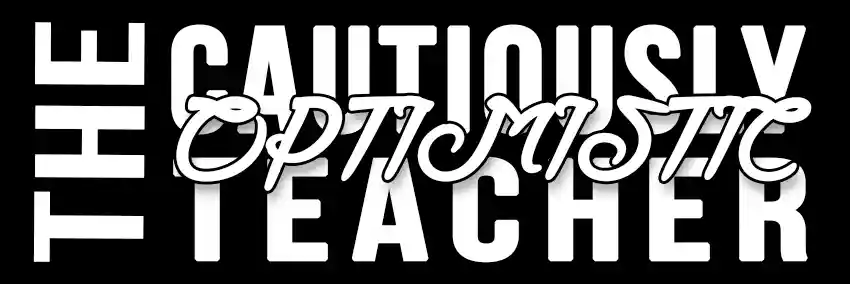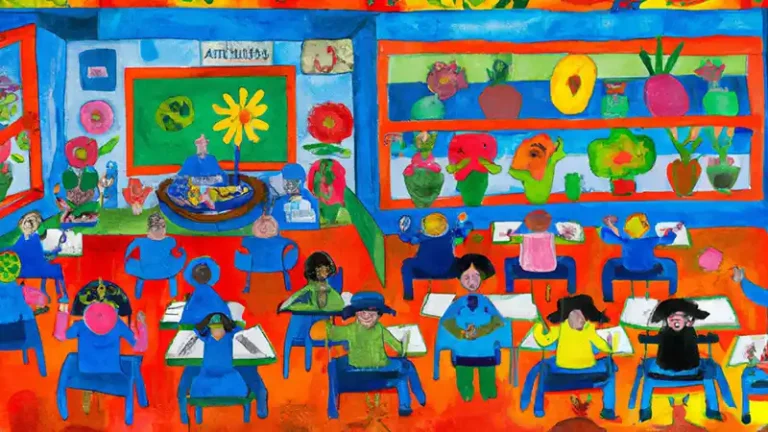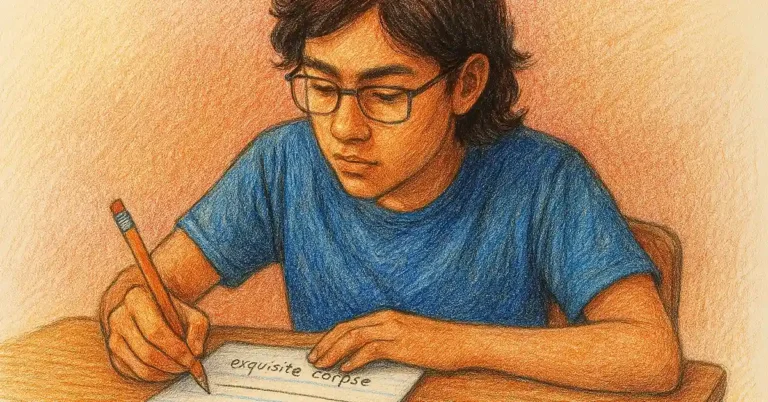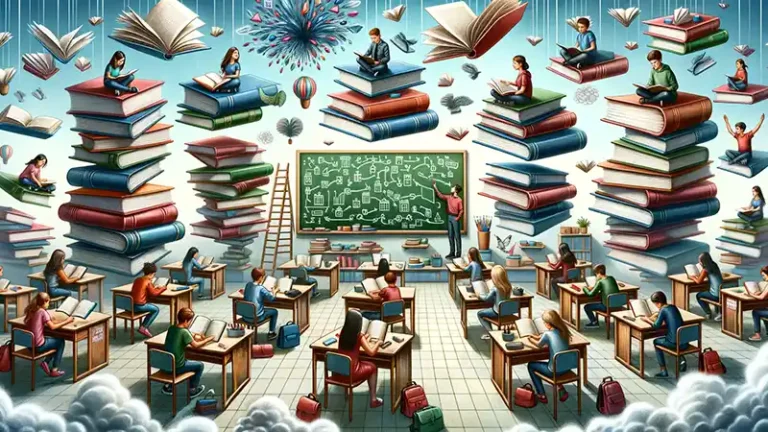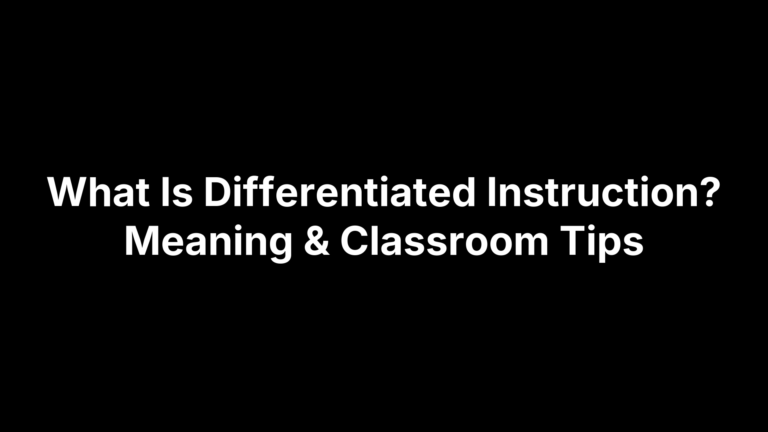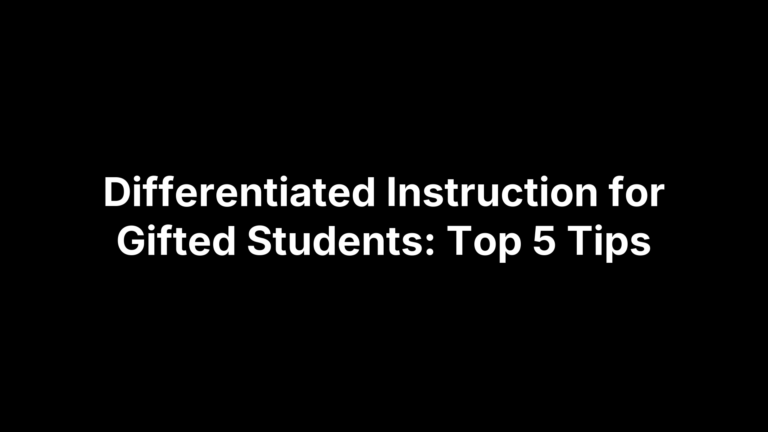How Learning Styles Boost Student Engagement
During my explorations, I stumbled upon the compelling world of learning preferences. Imagine, for a moment, that education is like a symphony. Each student has their own instrument, their own unique way of contributing to the music. These instruments, in the realm of learning, are their preferences. Some students are visual learners, painting pictures in their minds as they absorb information. Others lean towards an auditory style, hanging onto every spoken word or rhythm. There are also those who need to touch, move, and interact – the kinesthetic learners. And of course, the ones who dive deep into the text, reading and writing their way to understanding.
Recognizing and appreciating these learning preferences is not just a nod to individuality; it’s a bridge to building a more engaged, participatory classroom. As we journey further into this essay, I invite you to join me in understanding the profound impact of learning preferences on student engagement and the endless possibilities they bring to the world of education.
Dancing to Different Tunes: The Spectrum of Learning Preferences
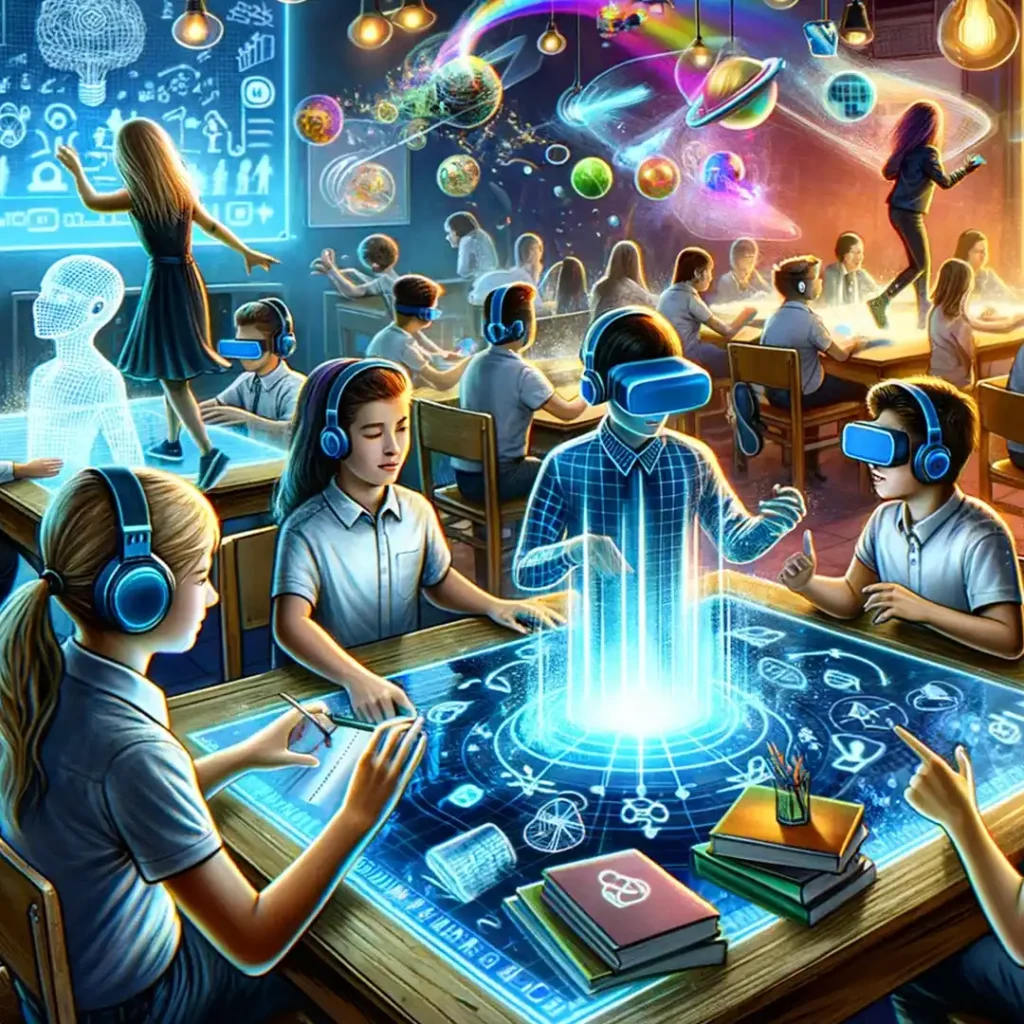
The beauty of the human mind is its distinctiveness. Each person’s cognitive landscape is uniquely tailored, leading to various ways of interpreting and assimilating information. As educators and learners, it becomes imperative to acknowledge and adapt to these diverse learning modes. Let’s delve into the myriad ways students connect with knowledge.
Auditory Learners: For these individuals, sound is their guiding light. Their minds come alive with spoken words, lectures, and discussions. Picture this: an auditory learner in a lecture hall, eyes closed, soaking in every inflection and tone. They might prefer podcasts over textbooks and often read out loud to themselves. The hum of a song or the rhythm of a spoken word can become powerful mnemonic devices for them.
Visual Learners: A picture truly is worth a thousand words for these learners. Charts, diagrams, infographics, and even the use of colors become crucial tools. They might doodle in their notes, not out of boredom, but as a method to visualize complex concepts. If you’ve ever seen a student who can recall the exact page and location of a piece of information in a textbook, chances are, you’ve encountered a visual learner.
Kinesthetic Learners: These are the doers. They thrive when they can move, touch, and interact with their learning environment. Traditional classroom settings can be challenging for them unless they’re given opportunities to engage physically. You’ll find them fidgeting, using hand gestures while explaining, or preferring lab sessions and field trips over lectures. Their mantra? “Let me try!”
Reading/Writing Learners: For this group, the written word is sacred. They devour books, jot down detailed notes, and have an affinity for lists. Essays, reports, and journals are their playgrounds. Given a choice, they’d prefer to dive deep into a textbook or explore a topic through written assignments. Their relationship with language, both in reading and writing, is profound.
Mixed-Mode Learners: While the above categories provide a framework, it’s essential to remember that learning is a fluid process. Many students don’t fit neatly into a single box. They oscillate between modes, blending and switching preferences based on the topic or their mood. Recognizing this fluidity is crucial, as it emphasizes the need for a multifaceted teaching approach.
The Symphony of Engagement: How Learning Styles Shape Participation
Venturing into the nexus of learning styles and student participation feels like opening a treasure trove of insights. For decades, educators, researchers, and psychologists have delved into understanding how the two intertwine. The findings, as I’ve come to appreciate, are both enlightening and transformative for the educational sphere.
Overview of Existing Research: At the forefront, numerous studies have consistently highlighted a robust correlation between recognizing learning styles and improved student participation. Dr. Howard Gardner’s theory of multiple intelligences, for instance, shifted the paradigm, suggesting that traditional IQ tests merely scratched the surface of human intelligence. The acknowledgment of diverse intelligences – musical, spatial, kinesthetic, and more – opened the doors for educators to craft tailored teaching approaches. Subsequent research has shown that when students are taught in alignment with their preferred learning mode, not only does comprehension improve, but their eagerness to participate and engage also skyrockets.
How Learning Preferences Influence Motivation: One might wonder, why does catering to a student’s learning style boost their motivation? The answer lies in the innate human desire for understanding and mastery. When students find the content resonating with their cognitive patterns, the learning process becomes less of a struggle and more of an adventure. They feel seen, understood, and, most importantly, capable. This sense of competence, as Deci and Ryan’s Self-Determination Theory suggests, is a fundamental driver of intrinsic motivation. When students are intrinsically motivated, they actively seek out participation, not out of obligation, but out of genuine interest.
The Role of Personalized Education in Student Engagement: In a world increasingly moving towards customization – be it in the realms of technology, fashion, or entertainment – education cannot remain an exception. A one-size-fits-all approach is rapidly becoming obsolete. Instead, personalized education, which factors in individual learning styles, is emerging as the gold standard. It’s not just about acknowledging that students have different preferences; it’s about actively integrating those preferences into the curriculum. Whether it’s offering varied assessment methods, utilizing diverse teaching aids, or encouraging students to explore topics in ways they resonate with, personalized education holds the key to unlocking unprecedented levels of student engagement.
The Harmonious Classroom: Reaping the Rewards of Diverse Learning Styles

In the rich tapestry of education, embracing the varied threads of learning styles doesn’t merely add color; it revolutionizes the entire fabric. When we cater to diverse learning preferences, the benefits echo far beyond the individual learner, permeating the collective classroom environment and the broader educational community. Let’s illuminate these multifaceted advantages.
Improved Classroom Dynamics and Participation: The classroom metamorphoses from a monotonous space into a vibrant ecosystem when diverse learning styles are honored. Teachers no longer face the uphill battle of capturing wandering attention spans. Instead, they witness eager hands shooting up, collaborative discussions blossoming, and a palpable sense of curiosity permeating the air. When each student feels their learning preference is catered to, participation isn’t forced—it’s a natural byproduct.
Enhanced Comprehension and Retention: A lesson taught in tune with a student’s learning preference is like a song that sticks—it’s catchy, memorable, and often revisited. The brain, when engaged in its favored mode of learning, processes and stores information more efficiently. Visual learners, for instance, might retain a colorful chart or diagram for weeks, while auditory learners might remember a catchy jingle or a passionate lecture. By tapping into these preferences, educators can significantly enhance both comprehension and long-term retention.
Decreased Dropout and Absenteeism Rates: A disengaged student is more likely to skip classes or, in extreme cases, leave the educational journey altogether. However, when the learning environment resonates with their cognitive style, the allure of the classroom strengthens. They’re less likely to find reasons to stay away and more inclined to immerse themselves in the learning process. As a result, absenteeism dwindles, and the ominous shadow of dropout rates recedes.
Boosted Confidence and Self-Esteem Among Students: At the heart of catering to diverse learning styles is a message of validation: “Your way of understanding the world is valid and valuable.” This acknowledgment can be incredibly empowering. Students, instead of second-guessing their capabilities or comparing themselves unfavorably to peers, begin to recognize and celebrate their unique strengths. This newfound confidence not only enhances their academic performance but also nurtures their self-esteem in myriad other facets of life.
Navigating the Pedagogical Landscape: Tools and Tactics for the Modern Educator

As we recognize the profound impact of diverse learning styles on student engagement, the pressing question for educators becomes: “How do we effectively integrate this knowledge into our teaching methodologies?” Thankfully, the world of pedagogy is rich with practical strategies that can serve as a compass for this transformative journey.
Tailoring Teaching Techniques to Accommodate Multiple Learning Styles
Flexibility is the educator’s greatest asset. While it might be tempting to stick to tried-and-tested teaching methods, the dynamic nature of today’s classrooms requires a more adaptable approach. Here are a few tactics:
Multimedia Integration: Blend lectures with videos, podcasts, and interactive simulations. This not only engages auditory and visual learners but also provides varied perspectives on a topic.
Hands-on Activities: Incorporate labs, workshops, and physical activities, allowing kinesthetic learners to thrive.
Encourage Journaling: For reading/writing learners, regular journal entries or reflective essays can offer a deepened understanding.
Group Discussions: Facilitate group activities, encouraging students to explain concepts to each other, which aids in reinforcing learning across different styles.
Utilizing Technology to Support Diverse Learners
The digital age offers a plethora of tools designed to cater to various learning preferences:
Interactive Platforms: Websites like Kahoot! or Quizlet engage students in a playful yet informative manner, appealing to various learning styles.
Educational Apps: Applications like Duolingo or Photomath use a mix of visuals, audio, and interactive exercises, providing a comprehensive learning experience.
Virtual Reality (VR) and Augmented Reality (AR): These immerse students in rich, interactive environments, catering especially to visual and kinesthetic learners.
Podcasts and Audiobooks: These are excellent resources for auditory learners, allowing them to delve into topics through listening.
Encouraging Students to Recognize and Voice Their Own Preferences
Empowerment is key. When students recognize their learning styles, they become active participants in their education:
Self-Assessment Questionnaires: Periodically, let students take quizzes or surveys to identify their dominant learning styles.
Open Dialogues: Foster an environment where students feel comfortable discussing their preferences. This not only aids educators in tailoring their methods but also instills a sense of ownership in the students.
Student-led Projects: Allow students to choose the medium or format for certain assignments, enabling them to play to their strengths.
Challenges and Considerations: Navigating the Nuances
While recognizing and accommodating diverse learning styles holds immense promise, it is not without its challenges. As with any transformative approach, there are pitfalls to avoid and considerations to be aware of.
The Danger of Over-Relying on a Single Learning Style:
Just as it’s essential to recognize different learning styles, it’s equally crucial not to pigeonhole students into a single category. A student who identifies as a visual learner will still benefit from auditory or kinesthetic experiences. Over-reliance on one style can inadvertently limit the holistic growth of a learner.
Addressing the Needs of a Diverse Classroom:
In a classroom brimming with diverse learners, striking a balance can seem like a herculean task. How does one cater to the auditory learner without sidelining the kinesthetic enthusiast? The key lies in varied instruction and ensuring that over a course or module, multiple styles are addressed.
The Evolving Nature of Learning Preferences:
Learning is a dynamic process. A student who resonates with one style today might find a blend of different styles more effective tomorrow. It’s crucial for educators to understand that learning preferences are not static labels but evolving orientations that can shift based on context, mood, or even the subject at hand.
Conclusion: Embracing the Future of Education
In the intricate dance of education, the rhythm is set by our students. As we step into an era that champions individuality and values inclusivity, the call for adaptive, student-centered teaching grows louder. By recognizing the myriad learning preferences and intertwining them with our pedagogical approaches, we pave the way for classrooms that pulse with engagement, curiosity, and genuine enthusiasm.
The journey of understanding student engagement is akin to exploring an ever-expanding universe. With every discovery, be it the impact of learning styles or the tools that support them, we not only enrich our current understanding but also open doors to future explorations. The horizon is vast, and as educators and learners, we march forward, hand in hand, towards a brighter, more attuned future of education.
Further Reading
Gardner, H. (1983). Frames of Mind: The theory of multiple intelligences. Basic Books.
Deci, E. L., & Ryan, R. M. (1985). Intrinsic motivation and self-determination in human behavior. Plenum.
